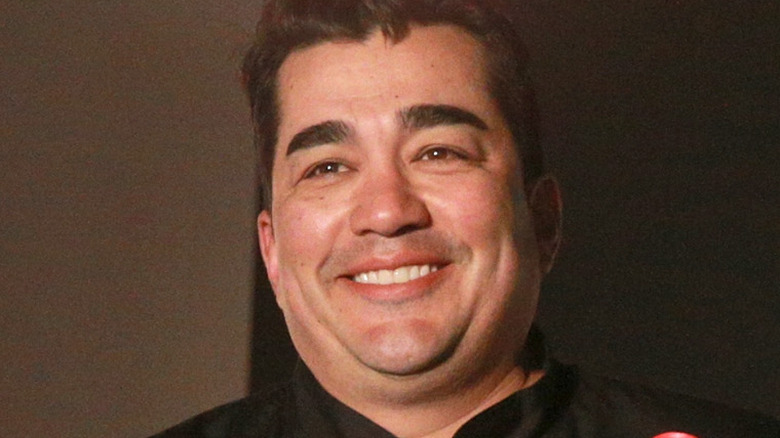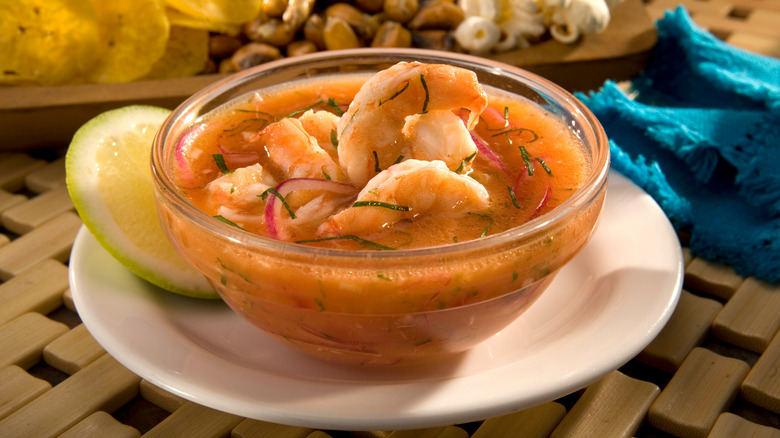What Chef Jose Garces Wants You To Know About South American Food - Exclusive
"Iron Chef" Jose Garces was born in Chicago, Illinois but has since settled in Philadelphia, Pennsylvania where he has opened multiple restaurants. But, in many ways his heart belongs to neither U.S. city but rather to Latin America. Garces' parents emigrated from Ecuador, and the South American cooking they brought into the family home would play a huge part in the budding chef's formative years. "I grew up in a Latin American household," Garces said during a recent exclusive Mashed interview, adding, "Both my mom and my grandma were huge influences on me in the home. They both cooked regularly. My grandma came mostly during summer, so I had a big exposure to her cooking. She was a matriarch of our family in terms of the cooking household, so yeah, really at a young age, whether it was cooking empanadas, ceviches, arepas, all these different kinds of 'Ecuadorian classics' were a big part of my youth."
As Garces began to cook professionally, the food he had grown up with would come to largely define his work as a chef, and his dishes would be seen as defining Latin-American cooking — which he noted was a big responsibility to shoulder. In talking about his experiences cooking on TV, Garces said, "The hardest part was the internal pressure that I put on myself. For me, during those years, I realized that I was cooking Latin food mostly, and it was for a huge national audience, and I felt the weight of that responsibility of carrying the culture forward. Each battle to me was like, 'Here I come carrying the Latin torch,' and the other chef on the other side would want to win and take me down."
There's a lot of diversity to love in South American food
When asked what people misunderstand about South American food, Chef Jose Garces replied that it's not so much that people have the wrong ideas, but rather that they simply don't pay this style of cooking enough attention. "I don't know if there's, in general, misconceptions, but I don't think that there's enough education on it," he said, adding that, in South America, all the different countries have their own specialties and styles. "Say, if you're in Brazil, you have a certain influence, you have a Portuguese and African influence. If you're in Argentina, you might have some Italian influences. In Peru, you have a Japanese influence, as well. Really, it's such a wide array of different cultures that come together that make fantastic food. I feel there maybe isn't enough of a spotlight on the continent as a whole and as it relates to cuisine."
Speaking about Ecuadorian food directly, Garces also added, "It's regional. It's not one-dimensional. Depending on [location], they call out the Sierra or La Costa. If you're by the sea, it's a certain way, or if you're on the mountainside, the food's a little different." But the one takeaway, he added, is the Ecuadorians really master the art of plantains and peanuts. "Those two ingredients on the coast really, really come through. They're pretty special. They'll make plantain empanadas, they'll be plantains in seafood-based soups. You won't even know it. Call it a secret ingredient from Ecuador."
Jose Garces' heritage continues to inform his cooking, including the line of meals he helped develop with Casa Verde. One difference from the traditional? The new foods are all plant-based. Follow Garces at his site for even more updates and inspiration.

